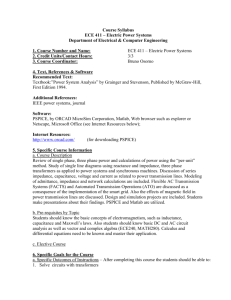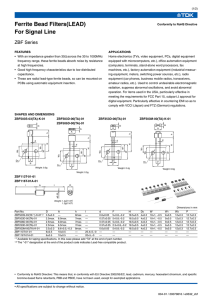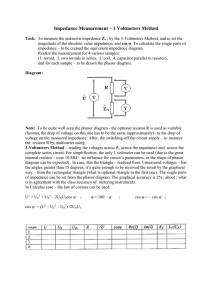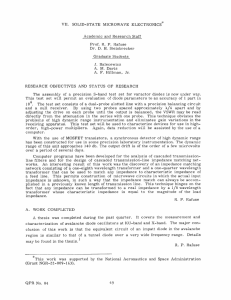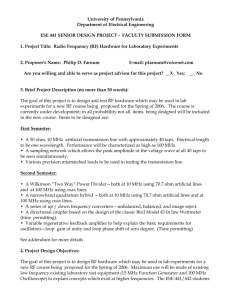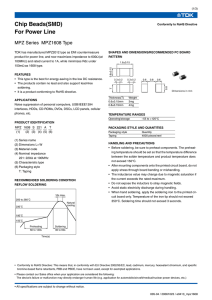ELEC 477 - Facstaff Bucknell
advertisement
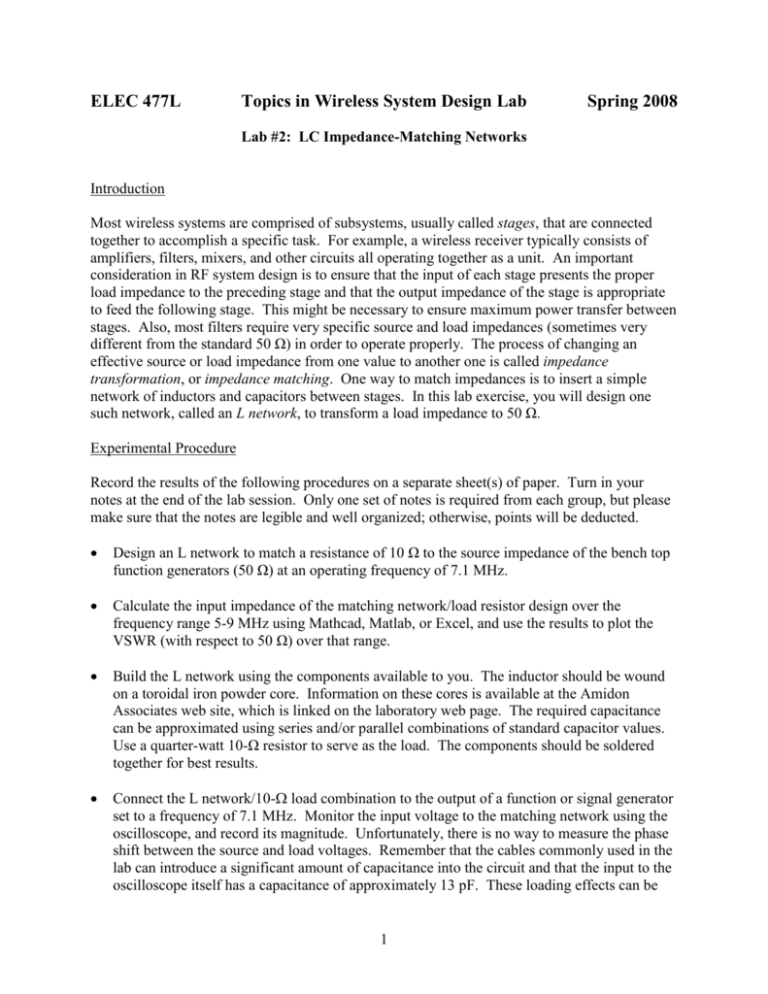
ELEC 477L Topics in Wireless System Design Lab Spring 2008 Lab #2: LC Impedance-Matching Networks Introduction Most wireless systems are comprised of subsystems, usually called stages, that are connected together to accomplish a specific task. For example, a wireless receiver typically consists of amplifiers, filters, mixers, and other circuits all operating together as a unit. An important consideration in RF system design is to ensure that the input of each stage presents the proper load impedance to the preceding stage and that the output impedance of the stage is appropriate to feed the following stage. This might be necessary to ensure maximum power transfer between stages. Also, most filters require very specific source and load impedances (sometimes very different from the standard 50 Ω) in order to operate properly. The process of changing an effective source or load impedance from one value to another one is called impedance transformation, or impedance matching. One way to match impedances is to insert a simple network of inductors and capacitors between stages. In this lab exercise, you will design one such network, called an L network, to transform a load impedance to 50 Ω. Experimental Procedure Record the results of the following procedures on a separate sheet(s) of paper. Turn in your notes at the end of the lab session. Only one set of notes is required from each group, but please make sure that the notes are legible and well organized; otherwise, points will be deducted. Design an L network to match a resistance of 10 Ω to the source impedance of the bench top function generators (50 Ω) at an operating frequency of 7.1 MHz. Calculate the input impedance of the matching network/load resistor design over the frequency range 5-9 MHz using Mathcad, Matlab, or Excel, and use the results to plot the VSWR (with respect to 50 Ω) over that range. Build the L network using the components available to you. The inductor should be wound on a toroidal iron powder core. Information on these cores is available at the Amidon Associates web site, which is linked on the laboratory web page. The required capacitance can be approximated using series and/or parallel combinations of standard capacitor values. Use a quarter-watt 10-Ω resistor to serve as the load. The components should be soldered together for best results. Connect the L network/10- load combination to the output of a function or signal generator set to a frequency of 7.1 MHz. Monitor the input voltage to the matching network using the oscilloscope, and record its magnitude. Unfortunately, there is no way to measure the phase shift between the source and load voltages. Remember that the cables commonly used in the lab can introduce a significant amount of capacitance into the circuit and that the input to the oscilloscope itself has a capacitance of approximately 13 pF. These loading effects can be 1 reduced significantly if the ×10 probes are used. Comment on your results; is the input voltage close to the correct magnitude for a 50- load at 7.1 MHz, given the amplitude setting of the generator? Use the handheld impedance analyzer to plot the VSWR vs. frequency over the same range for which you calculated the VSWR. Hand-copy the curve displayed on the analyzer’s screen onto your mathematically predicted curve (i.e., plot both on the same graph). Besides measurement error, what other factors might account for any differences you see? 2
